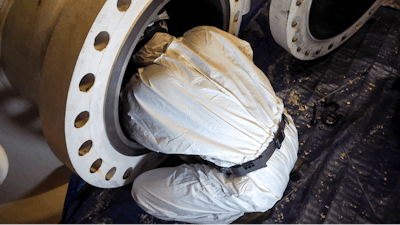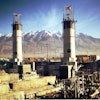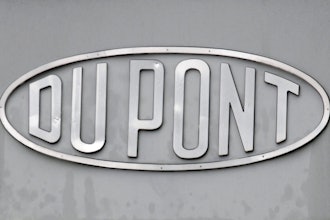
Confined spaces are the breeding grounds for germs and bacteria, be it in your home or industrial space. While these spaces are hard to reach, we mostly skip them in our regular cleaning routine. As cleaning in a confined space requires time and precision, besides, staying hidden from the eyes you might not want to clean them regularly.
However, due to the infrequent manner of cleaning, these spaces accumulate more dirt and germs than other places. For instance, if you look under your refrigerator or kitchen cabinet right now, you might find a layer of dust covering the floor. And that’s just the case for a residential scenario.
For industrial structures, confined spaces serve a special purpose, sometimes they need to be airtight and might be regarded as hazardous, and cleaning up those spaces is in no way an ordinary job. This article will highlight some cleaning tips for both residential and industrial spaces.
Cleaning Confined Spaces in a Residential Setting
As you might have guessed, confined spaces in a residence are hard to reach spaces; they usually don’t have any hazardous risk factor associated with the cleaning. Attics, basements, and any crawl spaces in your home can be regarded as confined spaces. If you rarely use or clean up those spaces, they can get infested with bugs and germs. The most effective way to ensure that they stay hygienic is to make sure they are frequently used. Here are some tips for cleaning residential confined spaces-
Declutter
Attics and basements are generally the places where we dump unused items. But if you keep piling them up with more junk, you will never be able to fully get rid of them. You should declutter those spaces and devise a better plan for discarding unused items.
Sort through the junk and sell or give away the savable items. Salvage the items worth keeping by thorough washing with portable pressure washers. Keep only the items that have immediate use to you or have some sentimental value.
Purify the Air
Confined spaces lack fresh air and sunlight; as a result, the air lacks the necessary oxygen for breathing. To purify the air, you can open the windows or skylight to let some fresh air in. If space lacks any type of opening, you can install a special hatch to let some air in.
Check for Molds
Attics and crawl space are the breeding grounds for molds, especially if you couple them with moisture or leaky pipes. After decluttering the space you need to do a proper mold inspection.
Hire some professionals if you find mold infestation on any surface. Get rid of the mold and vacuum the space to remove any residual mold spores. Ensure proper sunlight into the space to prevent further mold growth.
Opt For a High-Pressure Cleaning
While pressure cleaning is more suitable for industrial areas, you can still incorporate it if you are dealing with large-scale cleaning. It is especially handy for cleaning hard-to-reach spaces at home. However, make sure you know how to use the equipment and maintain the prescribed air pressure.
Cleaning Confined Spaces in Industrial Settings
Cleaning confined spaces in an industrial setting requires meticulous planning and precautions. One momentary lapse of concentration can end up costing valuable lives. Always hire professional service providers for cleaning these hazardous spaces.
Industrial confined spaces are the area that has limited access to people and is not ideal for habitation. The cleaning process varies depending on the purpose of the space.
Some spaces are used for storing foods or fuels, some are used as tanks, silos, or underground pits. Here are some basic rules for cleaning industrial confined spaces.
Consider the Geographical Location
Most industrial confined spaces are located underground. This usually saves from any explosion or other accidents. As it stays below the ground level the oxygen might vary, depending on the depth of the space. Some confined spaces might run low or high on oxygen levels.
Workers should have some mobile gas detector or measurer with them to detect the presence of any toxic gas within the space. They should also be equipped with an oxygen tank.
Evaluate the Space
Draw up an actual plan for the confined space that needed to be cleaned. Point out all the duct passage and utility channels around the space. If any high voltage utility ducts are running nearby, make sure you inform the authority about your cleaning. They might provide you with some necessary safety instructions that you need to maintain.
Pay Attention to the Ergonomics
Confined spaces are usually restricted for human entry. So the entry passage or exits may be designed with a much smaller opening than a regular human ergonomics demands.
Before entering the space make sure the cleaning personnel has enough room to get in and out of the space as well as to move around. Don’t forget to take into account the measurement of protective gear that the cleaning personnel will need to wear.
Train Up the Cleaning Personnel
Make sure your cleaning team knows exactly what they need to do once they go inside. If it is possible, train them with some technical knowledge on how to handle an emergency. Provide them with strict instructions about what they must avoid during the cleaning.
Minimize Physical Entry
Minimize the number of personnel that is entering the confined spaces. Too much traffic in a small space can create chaos and that can easily lead to an accident. Make sure you assess the space, cleaning tools, material, and feasibility of the cleaning before you undertake the task.
It will save you from a lot of trial and error, and the personnel will have lesser risk as they are going in just once, and come out after successful accomplishment of the task.
Be Cautious With Chemical Use
An elevated level of oxygen and combustible chemicals is never a good match. Make sure all cleaning chemicals are safe to use and the ingredients used in the cleaning products don’t pose any threat to humans handling them. During chemical use, take precautions to avoid the sudden release of gas.
The Bottom Line
Cleaning confined spaces come with its own sets of risks. To minimize these risks, you should adhere to the Occupational Safety and Health Administration (OSHA) guidelines and follow their instruction for both residential and industrial cleaning. For cleaning hazardous areas, get some help from professional cleaning services.























